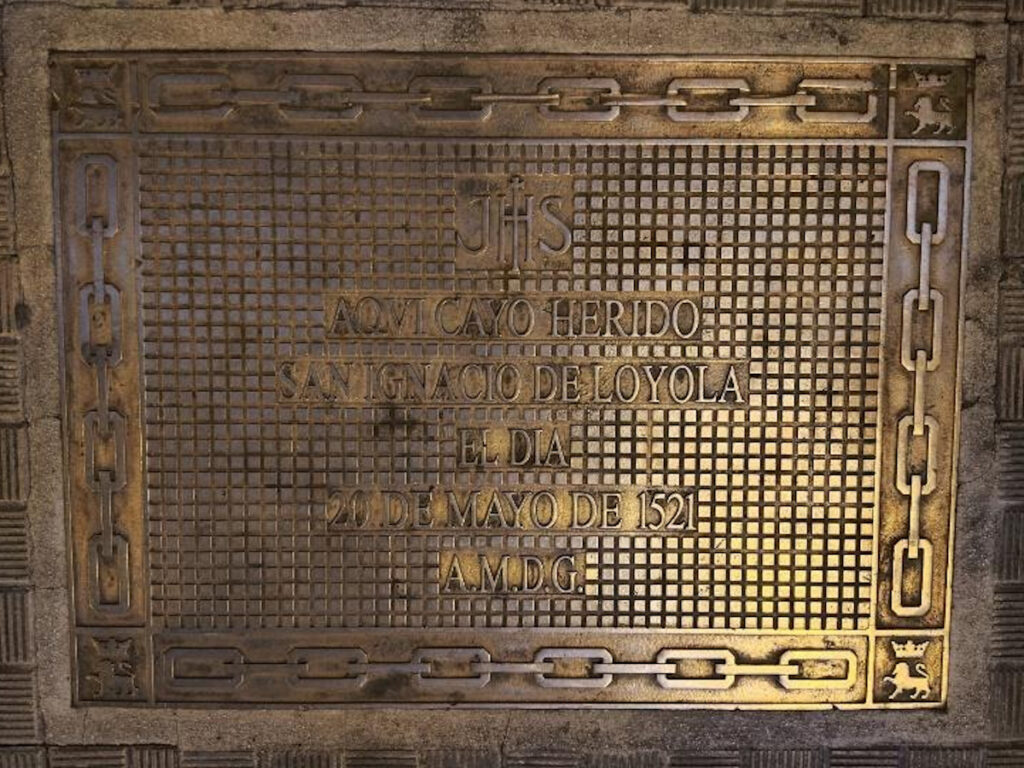
Nalerin Erone SJ shares his reflection on the wounding of St Ignatius during a recent visit to the actual spot in Pamplona. He is a Malaysian Jesuit belonging to the Malaysia-Singapore (MAS) Region in second year theology in Comillas Pontifical University, Madrid.
During this year’s summer vacation, I had the opportunity to spend a month in Pamplona. It was a wonderful experience not only to improve my language skills and be culturally immersed, but at the same time to learn and experience the history behind the city that impacted the life of Ignatius of Loyola, as well as the history of our Society.

500 years ago, it was said that the conversion of Iñigo López (better known as Ignatius of Loyola) began in Loyola after reading the book of Vita Christi and the Life of the Saints. But perhaps the conversion would never have taken place if there had not been a battle in Pamplona in defense of the throne of Navarre. Iñigo fell in that battle against France, and their defeat was a great failure for him. With a great and vain desire to gain honor (Autob.1), he could not accept the fact that he had lost the battle.
The Autobiography of St Ignatius, written by Gonçalves de Câmara, was written in such a way that it begins with the Pamplona experience. It could be said that his failure in Pamplona had a great impact on Ignatius’ life. Did he change after the fall? Or what exactly happened to him after the fall? Perhaps not much had changed. He was still trying to recover from an injury to his leg, and that gave him more time and generated more desire to be a great soldier, to defend the kingdom of Castile. This desire was still in Ignatius’ heart, but God turned his desire to be the soldier of the earthly king to the soldier of the eternal King, the soldier of Christ (Ex.Sp. 91).
Today, on San Ignacio Street in Pamplona, a plaque has been installed in the spot believed to be where Ignatius was hit by a cannonball. It is now a pedestrian zone heading towards Plaza Castillo through which hundreds of people pass every day, many of whom are unaware of the street’s history. This raises a question to me: Has the history of the great St Ignatius become merely a “pedestrian zone” or is it something that deserves to be remembered?
We proclaim 2021 as the Ignatian Year to commemorate the 500th anniversary of the conversion of Ignatius. The Provincial of Spain, Antonio España SJ in a press conference (Se presenta a los medios de comunicación el Año Ignaciano) on 14 May 14 said that we are celebrating neither the birth nor the death of Ignatius of Loyola, but “the transformation of his gaze, of his being, of his way of caring and of his way of living” which we call “conversion”. The wound of Ignatius in Pamplona draws us closer to our wounded reality, the wound that amputates our desire, our passion and our hope. Yet this is what we are celebrating this year, the celebration of the wound, the wound that ignites conversion.
In this current pandemic situation, the conversion of St Ignatius has not only taught us to persevere in times of uncertainty, anguish, and desolation, but has also grounded in us a new process of personal and spiritual transformation. The wound of Pamplona has brought us into contact with the wound of our present society. It has led us to understand that in the experience of the wound we are not forgotten, isolated or abandoned by God, rather it is a moment to allow ourselves to be found and to be dwelt by God in our woundedness. It is a wound that opens the possibility of encountering God and seeing everything in a new way. With the motto “to see everything new in Christ”, we are invited to reflect on our present reality, embracing our limitations and weaknesses, while contemplating Him in everything that happens to us, and rediscovering His will in order to collaborate with Him towards conversion.



Leave a Reply